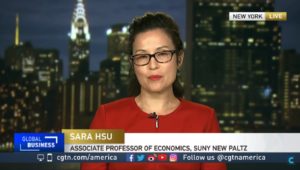
China’s massive One-Belt, One-Road program has often been compared with the US Marshal plan after the Second World War. Keen to reap the benefits, risks for investors have also been highlighted, writes financial analyst Sara Hsu at Capital Watch. US investors like Marc Merlino, head of Citi’s global subsidiaries group, started to explore the field, she writes.
Sara Hsu:
While investing directly in poorly screened OBOR projects directly may not make sense, Marc Merlino, to his credit, noted that ventures surrounding major OBOR projects provide huge potential for returns. Merino states, “it’s the opportunities for micro infrastructure beyond the core projects. All the knock-on effects ….” Certainly, after OBOR plans are carries out and the success of the construction can be more easily understood, investing in micro infrastructure could be quite profitable.
Past evidence of profitability of backward linkages between major invested projects and the rest of the economy can be witnessed in China’s special economic zones (SEZs). The clearest example of this is the city of Shenzhen, which was established as an SEZ in 1980, when it was a sleepy fishing village of 30,000 residents. Today, Shenzhen has become a megacity with a population of 12.53 million, and one of the most economically important cities in China. The city grew not only because of the influx of foreign direct investment, but also because of the growth of supporting industries. Many people who invested in the city early on have enjoyed significant profits as the city grew.
Prudent analysis would require that investors financing micro projects surrounding an OBOR project should perform the due diligence that China’s policy banks might have failed to undertake. This may require more resources to carry out than individual investors have, but is feasible for large institutional investors or lenders like Citi.
In sum, investors need to proceed prudently with regard to OBOR projects and recognize that many of the projects have been insufficiently vetted. Plans surrounding visibly successful OBOR projects may bear fruit as long as investors focus on assessing and hedging against risks. After this work is done, one can be cautiously optimistic about such plans.
Sara Hsu is a speaker at the China Speakers Bureau. Do you need him at your meeting or conference? Do get in touch or fill in our speakers’ request form.
Are you looking for more experts on the One-Belt, One-Road program? Do check out this list.

